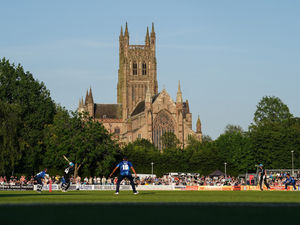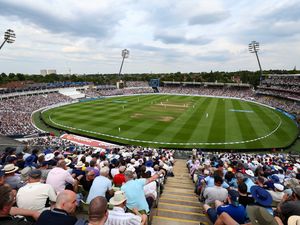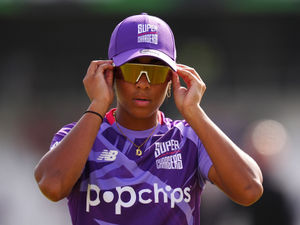Test cricket returns to Midlands
Test cricket is back in the West Midlands, so is Sky TV. Steve Madeley spent a morning with Bumble, Beefy, Nasser and Co at Edgbaston.
 Test cricket is back in the West Midlands, so is Sky TV. Steve Madeley spent a morning with Bumble, Beefy, Nasser and Co at Edgbaston.
Test cricket is back in the West Midlands, so is Sky TV. Steve Madeley spent a morning with Bumble, Beefy, Nasser and Co at Edgbaston.
"Is Rachel looking after you?" asks Nasser Hussain at the door of Sky's commentary box.
The reply is positive. "That's a first," says the deadpan former England captain.
My guide, Sky publicity officer Rachel McKibbin, then hails the skills of statistician Benedict Bermange.
"Benedict's not that good," says Hussain. "And stats are as boring as anything..." Then he is gone.
He is joking, I hope, but it is confirmation that at least one aspect of Sky cricket was as expected.
Hussain has a reputation as commentary box grump. The man who did more than most to drag English cricket from the doldrums revels in playing the role, on the microphone and off it.
Little else about the station's outside broadcast operation is predictable.
The commentary box is much larger than expected, the studio way smaller. David Gower is shorter, Sir Ian Botham larger and Michael Holding less fearsome than one might expect from 'Whispering Death'.
The shear scale of the hi-tech, multi-million pound travelling circus currently pitched up at Edgbaston is massive.
The trip to the commentary box is the highlight of the day, the wooden walkway at the rear ideal for hero-spotting.
Holding chats to former adversary Geoffrey Boycott, on duty with the BBC. Hussain considers his next package as the day's 'third man', Sir 'Beefy' jokes with Vic Marks, with Mark Nicholas and David 'Bumble' Lloyd checking out a newspaper with one beedy eye on the field.
The view from the box is outstanding – like being perched 20ft above long on, right above the action.
It is a vantage point enjoyed by the commentary team boasting a combined 1,283 England caps. Senior producer Paul King, a former resident of Dudley, oversees the whole operation from a few feet behind the commentators.
Yet, while those with a view of the game present the public face of the broadcast, much of the work to deliver the ground-breaking coverage is performed by an army of staff, who spend half their lives at Test matches yet barely see a delivery in the flesh.
A fleet of 15 trucks, one of which is the largest vehicle allowed on British roads, have rolled into Birmingham and set up a mobile village, nestled between the River Ray at the rear of the Eric Hollies Stand and the practice ground beyond.
There is a VT truck, inside which 10 people work solely on making action replays available instantly for viewers.
A two-man vehicle is devoted to controlling sound, another houses three experts producing graphics and another – extremely cramped – truck is reserved for technicians and engineers poised to trouble-shoot.
The channel's technical innovations have a headquarters of their own with two men operating Hawkeye, a separate duo on 'hot spot' and another monitoring the 'snickometer'.
Every ball is scrutinised by each team, so whether it's a slight noise, a potential lbw or a spot on an infra red camera, match director Mark Lynch has every aid at his disposal within seconds.
In all 80 Sky staff travel to each Test. The nerve centre, is the giant truck in which the whole production is drawn together.
Lynch has the high-pressure task, although his demeanour would not suggest a hint of panic. His job is to watch 78 screens on a giant wall and conduct his 'orchestra'.
He has every camera angle, constant Hawkeye, hot-spot and statistics to choose from.
No camera change occurs, graphic appears, replay begins or commentator speaks until Lynch gives the instruction into his headset.
Yet, even as England wickets clatter, the man in charge of what we all see maintains his calm.
Not even Nasser could find fault with that. Or if he did, he wouldn't mean it.





